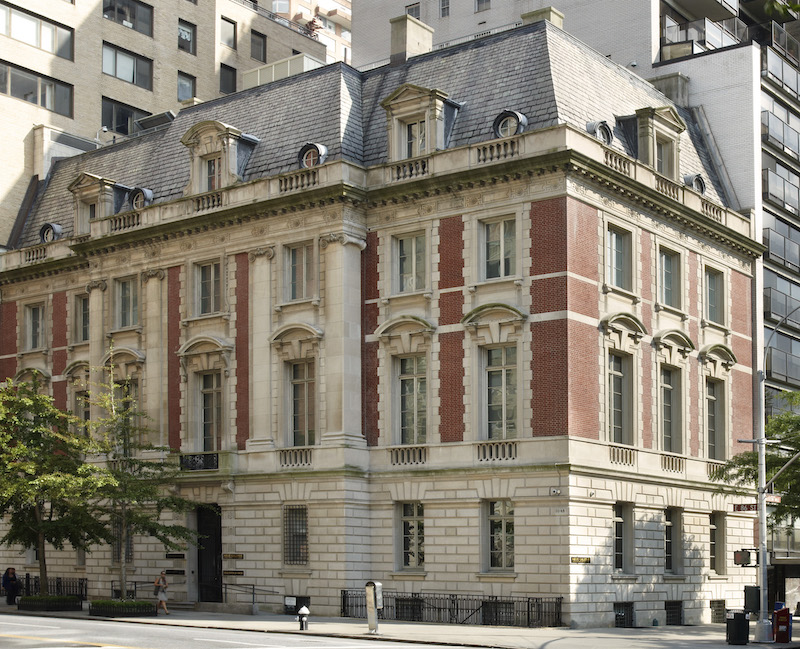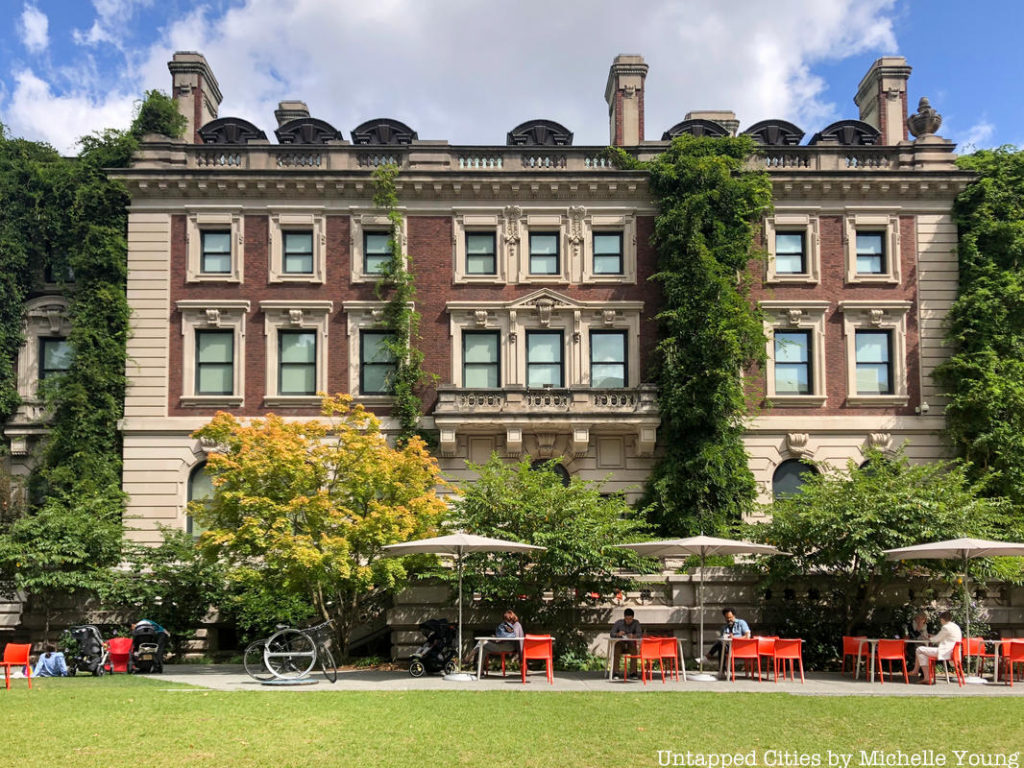
New York’s most famous Beaux-Arts buildings may be grand civic spaces like the Metropolitan Museum of Art, Grand Central Terminal, and the New York Public Library, but the city also has a number of Beaux-Arts mansions constructed during the Gilded Age. During that period, the Beaux-Arts style was the style du jour, and the city’s wealthiest tycoons hired renowned architects like Richard Morris Hunt and Stanford White to design lavish homes that drew inspiration from European palaces and monuments.
Beaux-Arts mansions such as the Petit Château built in 1882 by Richard Morris Hunt for William Kissam and Alva Vanderbilt set the precedent for other Beaux-Arts buildings, including the aforementioned civic buildings. “A combination of European style and American vitality, it became the prototype of a new architectural style—which also had its roots in France—that was to form the basis of virtually all buildings in New York City for the next fifty years,” Phillip James Dodd writes in the introduction to An American Renaissance: Beaux-Arts Architecture in New York City, referring to the Petit Château, which was built in the style of a Loire Valley castle.
Many of those Beaux-Arts mansions, including the Petit Château and the Vanderbilt Triple Palace, were later torn down, but fortunately, some of them still remain. We’ve rounded up ten gorgeous Beaux-Arts mansions in New York City that you can still admire today.
1. Andrew Carnegie’s Mansion

Steel magnate Andrew Carnegie rose up from humble origins to become one of the wealthiest Gilded Age tycoons in the U.S. Born in Scotland, he immigrated with his family at the age of 13 and settled in Allegheny, Pennsylvania. A voracious reader and ambitious young man, Carnegie worked his way up to a superintendent on the Pennsylvania Railroad at just 24 years old. By the time he was 30, he had business interests in railroads, steamers on the Great Lakes, iron works, and oil wells. He eventually built Carnegie Steel Corporation into the world’s largest steel manufacturing company.
Carnegie was already 63 when he purchased several plots of land on and around East 91st Street and Fifth Avenue on the Upper East Side, and he deliberately sought out land far north of where his peers were living on so-called Millionaires Row. He hired the firm of Babb, Cook & Willard to design a spacious 64-room mansion with a large enclosed garden where he and his wife could raise their daughter. Done in the English Georgian style and completed in 1902, it was the first private home in the U.S. to have a structural steel frame and one of the first in New York City to have an Otis elevator.
Carnegie spent his retirement working out of the office in this mansion to oversee his many philanthropic efforts, donating some $350 million toward the creation of libraries, support of cultural institutions, and the promotion of world peace. Undoubtedly one of New York’s most beautiful Beaux-Arts mansions, it’s now home to the Cooper-Hewitt, Smithsonian Design Museum.





